
19 minute read
Cooling
from DCR March 2020
It’s gettin’ hot in here
Following news that the 2010s were some of the hottest years on record, Nick Osborne, data centre specialist at Aggreko, explores how providing sufficient air conditioning equipment is a key measure to avoiding overheating and that dreaded downtime.
Advertisement
As global temperatures continue to rise and adverse weather conditions become more prevalent, controlling and mitigating the vast amount of heat that data centres produce is a more pressing issue than ever for the sector. With over 175 zettabytes of data predicted to be in existence by 2025, it is even more vital that existing and future data centres have the correct infrastructure in place to ensure heat generated by server racks and IT apparatus is balanced.
Cooling systems, both liquid and air-derived, are available to data centre providers to suit the requirements of facilities of all sizes and outputs. However, a survey by Science Direct found that 61% of data centres are running at low efficiency, particularly thanks to unsuitable cooling systems. With this in mind, it is vital that data centre providers understand the requirements of their facility and can benefit from the expertise of a specialist to select the best cooling solution.
Extreme heat causes downtime Climate change is a contentious topic across all industries, not least the data centre sector. With the market predicted to account for a third of
global electricity consumption, as well as 3.2% of worldwide carbon emissions by 2025, the growth of the data centre industry threatens further climate change and ensuing effects on weather and temperature.
High temperatures and humidity that could become commonplace in the future are conditions that spell disaster for data centres. Equipment in these facilities produce vast amounts of heat as it stands, and, with elevated temperatures from extreme weather patterns, the risk of overheating becomes higher than ever.
The large amounts of heat generated by server racks and IT apparatus have been a long-standing concern for companies across many industries. With worldwide spending on data centres hitting $93 billion in 2019 according to Synergy Research Group, it is no surprise that stakeholders want to prevent downtime and the ensuing costs that come from it.
As technological advancement drives further implementation of innovations, such as edge computing, artificial intelligence and IoT, new hardware to satisfy the higher demand of the data centre will produce even larger amounts of heat. Companies investing in advanced technologies to enhance their offering means not only will data centre providers need to construct more facilities, but will also need to more carefully consider how they will cool equipment with more advanced hardware.
The rises in temperature caused by by-product heat within a facility can affect infrastructure performance and lead to potential disruption and plant failure – consequences data centres and businesses reliant on server rooms are keen to avoid. Therefore, it is of paramount importance that IT professionals and data centre managers carefully consider whether their existing cooling equipment is suitable for their business’ needs.
Keeping cool When it comes to removing heat in data centres, the two most common methods currently in use are air or water-cooled systems. As higher temperatures begin to put data centres of all sizes at risk of overheating, it is vital that providers select the correct solution for satisfying the requirements of their facility.
An air-cooled system delivers cold air into the data centre or server room, extracting warm air from the room, mixing both to eliminate hot spots. This approach is most applicable for data centres and facilities with comparatively smaller power load densities, where the power load required for the mixing process is a small fraction of the facility’s total power load. Where this is not the case, the system’s efficiency declines. Instead of balancing the temperature of the room, a water-cooled system transfers chilled water to exactly where it is required – the server racks and computer banks. This targeted approach is more efficient for companies operating larger data centres or server rooms.
Though cooling systems of these types are usually installed as a permanent fixture within a data centre, temporary rental of cooling solutions may also need to be employed with extreme hot weather patterns occurring more frequently than ever. With data centres already using more and more power than ever before and the resulting impact on the environment a key industry concern, temporary solutions will alleviate the effects of a sudden heat wave without permanently using large amounts of power across a facility’s lifespan.
Within a data centre that uses free cooling, a system where cool air is supplied directly from the outside in cold weather locations, such temporary solutions, may be required in unusually warm conditions that may suddenly occur. As a contingency strategy, the implementation of chiller stab points within the cooling system allows for pre-existing access points for temporary chilling solutions to be quickly installed, ensuring downtime is kept to a minimum.
It must be noted that no two sites are the same, and may be subject to a wide array of changing variables such as temperature, humidity levels and available space. So, before selecting air conditioning and cooling equipment, a site survey should be carried out to clarify the site’s power and temperature requirements, and what environmental factors need to be considered.
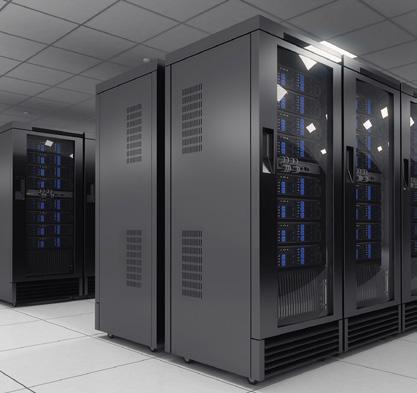
With worldwide spending on data centres hitting $93bn in 2019, it is no surprise stakeholders want to prevent downtime and the ensuing costs that come from it
Finding the right solution Specifying the right temperature control system can be a highly technical task, usually requiring an expert in heating, ventilation and air conditioning to develop a bespoke plan. With this in mind, it is advisable companies use a third party to carry out this service.
Whether it is a long-term solution for temperature control, or a short-term hire of a system to alleviate the effects of sudden heatwaves or extreme weather fronts, choosing the right cooling equipment for a data centre is vital to avoiding downtime and added cost. Being sure of the facility’s demand, the weather patterns in its location and, crucially, consulting an expert of data centre temperature control will ensure such issues do not occur.
Don’t screw up at the edge
Iceotope director David Craig shines a light on the failings of traditional cooling technologies, and highlights the methods best equipped to handle modern-day cooling requirements at the edge.
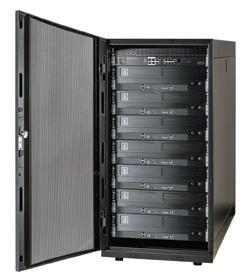
The challenges facing edge computing, AI and edge-AI are pervasive once you start to deploy processing and storage capacity outside the data centre, and into non-dedicated environments in close proximity to the point of use.
Challenges including the dense heat loads generated by GPUs to drive emerging applications, power availability and energy consumption, physical security and tamper risks, reliability and resilience in harsh IT environments, and maintenance outside the data centre, are just some of the obstacles that enterprises will need to overcome to deliver real-time value at the edge.
It isn’t a simple case of taking what currently works well in the data centre, tweaking it and packaging it up as an edge computing solution. Pushing traditional technologies, such as air cooling, from the data centre to the edge might seem convenient in the short-term, but it may not be effective in the medium-term and could prove to be a big and expensive mistake in the long-term.
The problem with traditional technologies Traditional air cooling has served the industry well but pushing it to the edge is non-trivial. Once you take energy efficient IT out of the controlled data centre environment that provisions it, you not only lose control, you also lose efficiency. What’s more, your once enviable data centre PUE shoots through the roof as inefficiency is a major cause of wasted energy. To compound the problem, the lack of three-phase power supply is already causing concern at the edge.
Fans and moving parts are critical to cooling electronics with air, but are also failure points which need regular servicing and maintenance. The in-chassis vents and holes which enable airflow to remove heat, also expose the IT load to environmental contaminants – and people. Bearing in mind that people will be people and if an error can be made it almost certainly will be. So, you now have a security, resilience, energy and cooling problem at the edge.
Warm water cold plates and similar devices can partially solve the problem of increasing chip densities. However, they still require air cooling to deal with the heat they do not recover – often up to 40%. The new hotter and denser chip technologies which are on the horizon today will impair the effectiveness of these cooling techniques even further.
To overcome these obstacles and enable the edge to deliver its full promise, we need to move on from the legacy mindset which says whatever works now will continue to work in the future. We need to implement new solutions that are edge smart and fit for purpose; technologies that can be deployed resiliently, securely and responsibly. Technology that will deliver the real value the edge offers and not the nightmare of mismanaged implementation.
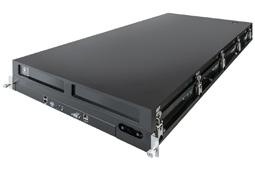

The answer is chassis-level liquid cooling Chassis-level liquid cooling combines the pros of both cold plate and immersion liquid cooling and removes the cons of both technologies. Chassis-level liquid cooling uniquely allows your compute to be deployed to the edge in a sealed and safe environment which makes it impervious to heat, dust and humidity, while endowing it with a high degree of “human error resilience” – or “idiot proofing”, as more seasoned veterans might wish to define it!
A sealed and silent chassis allows edge IT to be delivered in latency-busting proximity to the point of need with class-leading energy performance from day one. By reducing single points of failure and increasing resilience, chassis-level liquid cooling technologies significantly reduce the cost and risk of servicing and maintenance at the edge.
It is beyond doubt that new and emerging applications will play a major role in advancing our home and business lives. The heart of this is not just the way that next generation microprocessors and software are designed, but also the way that physical infrastructure such as chassis-level liquid cooling is utilised to ensure the scalability, reliability and efficiency of IT services for always-on users.
We can all enjoy the competitive advantages and real-time value that AI and other amazing technologies can deliver at the edge, but we need to do it in a way that keeps our planet safe and our data secure. The future is beckoning; don’t screw it up at the edge.

The roaring twenties
Darren Watkins, managing director at Virtus Data Centres explores why colocation is going to win big over the next decade.
It appears that the demise of colocation may have been great ly exaggerated. While some anticipated colocation would lose out to cheaper cloud computing solutions, analysts are now universally predicting its continued growth into the next decade, thanks to ongoing digital disruption and the leveraging of artificial intelligence (AI) and machine learning.
Organisations have found that by moving on-site IT infrastructure to a colocation provider, they can reduce costs, scale up or down, benefit from more uptime and mitigate security and compliance risks – all without any detrimental effect on performance. And today’s high-speed network connections between a company’s premises and their data centre ensures rapid access to servers and storage, just as if they were installed on their own site.
Powering budget and growth On-site servers can be one of the biggest money drains for a business. From employing expert data centre managers and staff, to powering servers and ensuring they’re kept at a steady temperature, on-site data centres demand plenty of budget – often preventing organisations from investing in other growth areas.
By colocating infrastructure in an external data centre, businesses can circumnavigate many of these costs while retaining the resources they need to grow. It can help businesses free up physical space for more people, more storage or more facilities, enabling organisations to save on the costs of expanding to new premises – as well as enjoying all of the additional benefits that come from moving their IT infrastructure off-site.
Colocation also offers the high-grade infrastructure needed by the diverse industries that use high density computing. For example, the cloud environment used by companies in the media industry must be able to cope with ultra-high-density applications, which media companies need for digital rendering due to the high compute power needed to layer visual and audio files. The necessary power and associated cooling for the IT hardware to support such applications just isn’t reliably available in today’s office buildings – and that’s where colocation comes in.
Ensuring reliability, uptime and optimum data security Reliability has always been one of the biggest arguments in the build vs. buy debate. Businesses rely on critical applications and core software
systems in order to operate at peak performance. But – it’s not as simple as is appears. Power outages happen, UPS backups run dry, servers can fail, and your technicians may fall victim to human error. However, by colocating to a shared data centre, companies benefit from a professionally managed environment and an expert team whose job it is to keep facilities up and running.
Maximising environmental benefits Data centres require a tremendous amount of energy that can be harmful to the environment. Data centres in the US alone are projected to consume approximately 73 billion kWh in 2020 – and efficiency and sustainability is a universal challenge that transcends companies, geographies, and workloads.
But, as well as cutting down the number of individual data centres, organisations that embrace colocation providers also benefit from their commitment to continued innovation in this arena. In today’s climate, it’s crucial for colocation providers – both as individual businesses and a collective industry – to continue to work towards environmental sustainability.
Colocation in a cloud-based industry When it comes to threats to colocation, there is no question that the rapid growth of cloud is shaking up the industry. But, despite existing misconceptions, the cloud and colocation offerings available today exist in a topology that can be modelled to suit any corporate business objective, including rapid growth, consolidation, simplification, mobilisation or cost reduction.
However, to remain competitive, traditional colocation providers must ensure that their data centres are capable of delivering not only first-class colocation services with flexible contract options, but also offer their customers a clear on-ramp to cloud.
Businesses use public clouds for access to huge amounts of data and massive compute capability, for on-demand computing when needed, or simply for storage. However, organisations still maintain their own private clouds as a way of processing and adding value to their own sensitive data that they collect and to handle complex computations. This is the hybrid world that is the de facto standard, and is something the industry must continue to learn to cope with.
Colocation clearly offers compelling advantages in terms of IT management and business continuity. However, colocation companies can’t be complacent – they will need to adapt to emerging technologies such as network functions, virtualisation, software defined networks and Platform-as-a-Service (PaaS) if they are to continue to support the scale and functionality needed by modern and growing businesses.
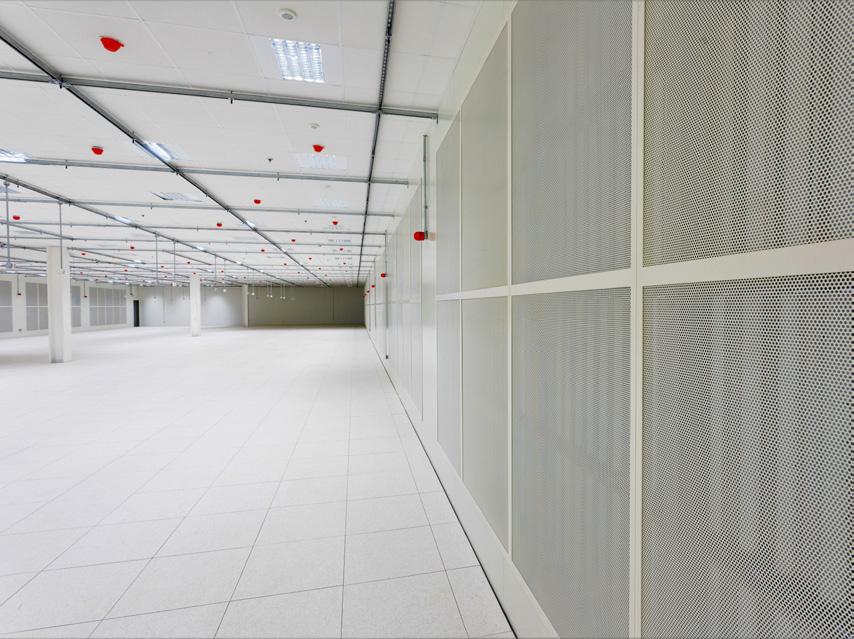
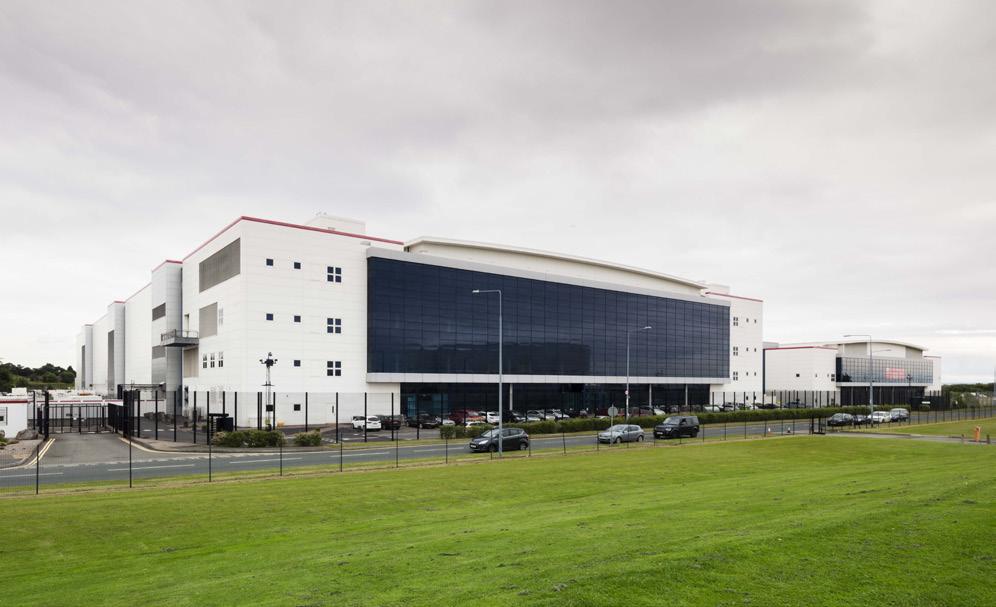
Best of both worlds
Justin Jenkins, CEO at Next Generation Data, discusses why colocation certainly has not had its day and why it doesn’t have to be a case of either or when it comes to colocation and the cloud.
Heading into the new decade, it would be easy to assume that colocation’s days are numbered: an industry born over 30 years ago is finally being usurped by the cloud. There again, it’s often dangerous to assume.
From what we are seeing, alongside our cloud provider hosting services and in line with market forecasts, nothing could be further from the truth. The signs are colocation can look forward to at least sustained demand for the foreseeable future. The reason: CIOs are now fathoming the enterprise workloads that do, and don’t, fit in the cloud from a cost and complexity perspective.
Despite the cloud having a significant and growing role in future planning, analysts predict roughly half of all enterprise workloads will not go into it. Together, cloud and colo will therefore most probably evolve as the most compelling proposition for managing almost all enterprise data processing, storage and applications requirements. They’re complementary solutions rather than head to head competitors.
With this, enterprise organisations will have to decide whether to continue investing in privately-owned data centres for non-cloud workloads, or outsource to colocation operators. For many, faced with ever decreasing IT planning windows and the escalating costs, risks and complexities involved in designing, building and managing their own facilities, colocation will be an obvious choice.
But this doesn’t necessarily mean it will be an easy ride for colo providers. Times are changing, driven by the power and critical infrastruc-
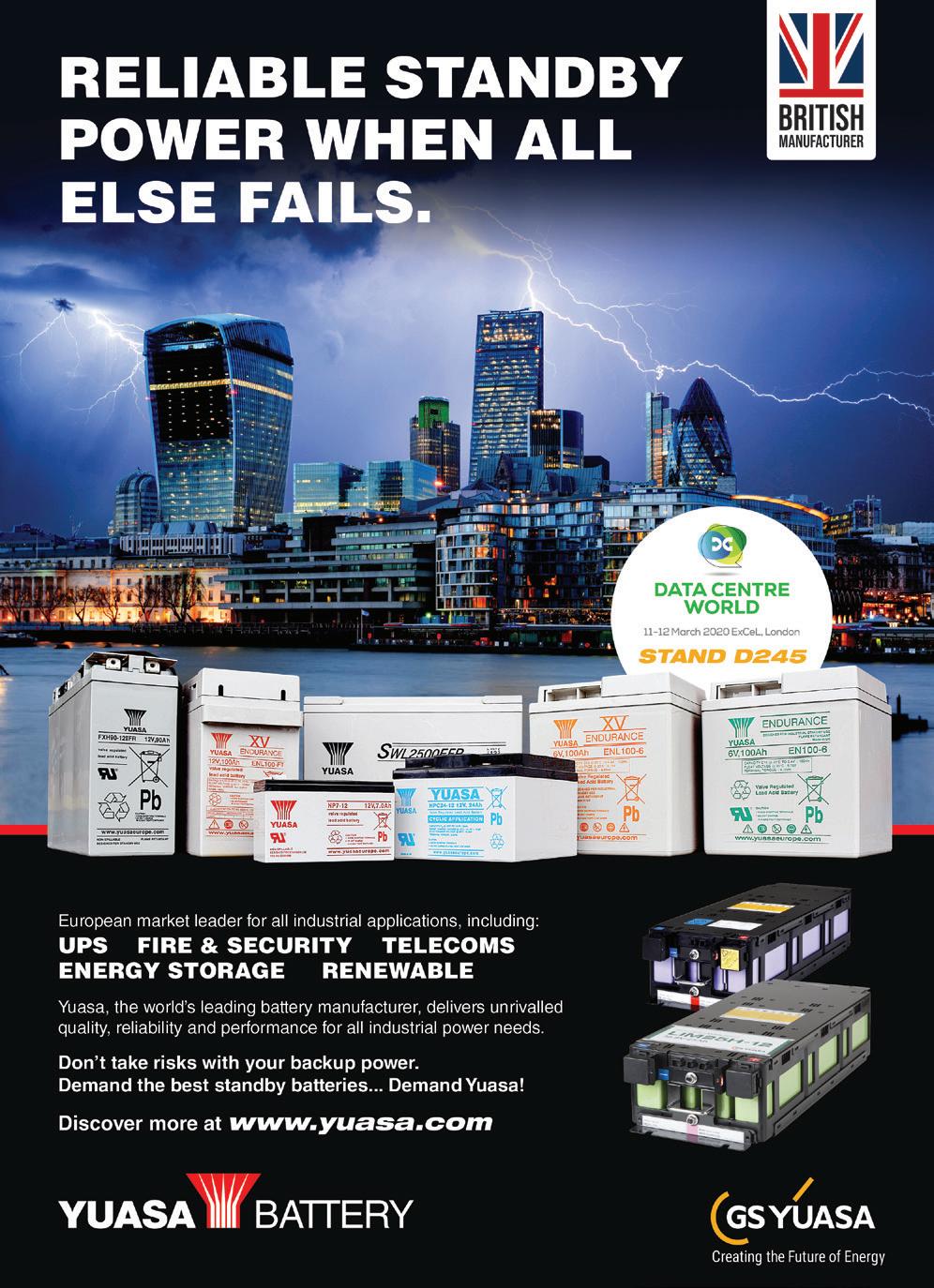
ture needed for supporting new technologies such as hybrid cloud, HPC and AI. There is a growing focus on levels of resilience, security, cooling, connectivity, as well as space, energy efficiency and compliance.
As the decade progresses, some operators will probably need to close or completely upgrade smaller or power strapped facilities. Others will build totally new ones from the ground up. Only larger ones, especially those located in lower cost areas where real estate is significantly cheaper, may be capable of the economies of scale necessary for delivering affordable and future-proofed solutions for larger workload requirements.
Reviewing the situation Providers aren’t the only ones needing to review the situation. CIOs of enterprise organisations considering a move to colocation today, or in the next few years, will need to look very carefully at potential providers and facilities.
First and foremost, data centre power to space ratio will be increasingly critical. Converged, AI and HPC deployments, for example, are already driving up rack densities; 15-20kW is becoming more the norm, and we are now seeing densities rise to 40, 50, even up to 100kWs. This has called into question a facility’s immediate and forwards power availability and ability to provide cooling solutions. But it varies considerably, as does available space and levels of M&E redundancy. So does security. While the latter is a combination of physical barriers, the operational regime and diligence of staff is also inextricably linked. There’s also a huge variation in the thoroughness and regularity of relevant testing, planned preventative maintenance and reinvestment – from none at all through to excellent.
Levels of connectedness are a further priority. The best data centres are hyper-connected with a plethora of carrier and gateway options. The worst are isolated sheds with little connectivity. However, connectivity is often overlooked, leading to inconsistent performance, poor user experience and lack of security between public and private cloud environments, and any applications remaining outside of the cloud infrastructure.
Last but not least, data centre location remains an important factor. It’s worth evaluating the environmental risk factors such as proximity to a flood plain, flight path, and terror threat level. Space and service pricing is also influenced by location due to the cost of real estate and labour. Out of town locations that are free from the risks and constraints of metro locations are likely to offer lower unit costs. Should an overseas facility be under consideration, geopolitical factors will also have a huge influence on the ‘what ifs’ and contingencies at a data centre.
Colo evaluation checklist • Avoid cost being the overriding decision criteria: the data centre is critical to delivering the overall project and its actual cost is often relatively modest by comparison. • Don’t procure to a rigid specification: let the operator demonstrate how they run their facility instead. • Space and power: ensure availability for meeting future expansion needs. • Uptime: investigate any historical failures; request a written response on long-term history of service continuity and SLA conformance. • Check how the critical plant has been invested, architected and operated: meet the people and decide if they have the right attitude and will be good to work with. • Check the management reporting on service, capacity, utilisation, and compliance is done in a transparent fashion: a good third-party operator should give you more control and insights to manage the service than doing it yourself.
Colo and cloud are complementary solutions rather than head to head competitors




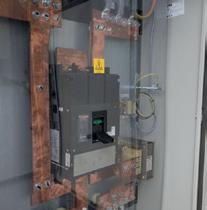
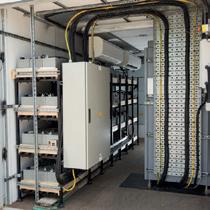
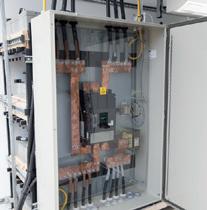
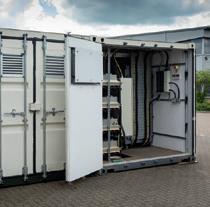
Levant currently have hired UPS systems installed across a variety of sectors such as; banking, healthcare and data management. Our UPS hire options are tailored to the needs of your business and we can have hire UPS systems installed on site in minimum time. We hold in stock a wide range of UPS hire systems from a variety of high end UPS manufacturers. The systems we have available for UPS hire are fully serviced and periodically tested to ensure they are ready to run at short notice. UPS hire is a growing a market as it aff ords businesses the option of covering peak times during business such as public holidays or large sporting events without the huge fi nancial commitment of purchasing a brand new UPS system. This gives sites a greater deal of fl exbility allowing for adaptable power protection in line with the demands of your business.



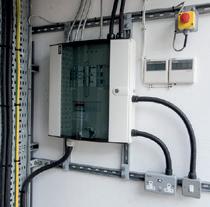
We will maintain the system and provide a 24-hour call out response for the entire duration of the UPS hire. Get in touch with us to fi nd out about the range of leading-brand, high quality units that we off er for immediate UPS hire.
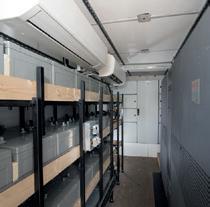
UPS Hire
Containerised and free-standing UPS systems available to hire with rapid response and UK wide coverage
Short term and long term options available with or without batteries
Contact us today for more information or a quote













